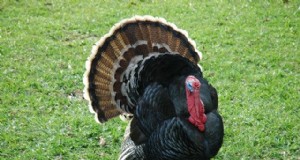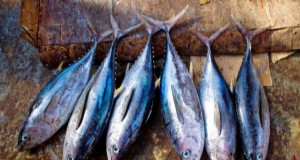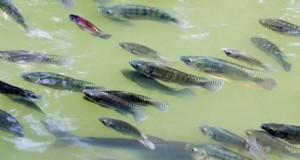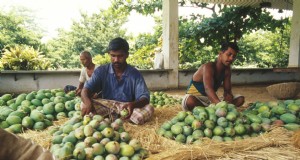エビの栽培–完全ガイド
今日、 エビ養殖(エビ養殖)の議論に取り組んでいます。
エビ栽培入門:
エビ養殖は、主に人間が消費するために淡水でエビやエビを育てることを目的とした水産養殖業です。淡水エビ養殖は、内陸の水産養殖システムで大きな需要を獲得しています。
水産養殖のための膨大な淡水資源を持っている多くの国では、 一般的に魚に使用され、 鯉やその他のナガスクジラの養殖は限られています。養殖業では、 多くの近代的な技術を実装した複合魚の養殖は、多くの国で一般的になっています。そして、かなりの努力を払ったエビの栽培でさえ、単独で、または仕上げと組み合わせて行うことができます。この目標を達成するための重要なステップは、がらくた養殖と組み合わせたエビの養殖です。
グローバル市場では、 淡水エビの年間生産量は380、 000トン、 中国が最大の生産国であり、 そして彼らはインドとタイにやって来ます。エビの栽培は、熱帯および亜熱帯気候で実り多いアクアビジネスです。
淡水池でのエビ養殖、 鯉と一緒に利益を得るための最良のステップです。池でエビを栽培することは、湖からエビを栽培する慣行よりも成功したビジネスです。 河川、 運河または小川または河口。
エビの栽培は非常に有益です、 エビは淡水池で非常に速く成長し、6か月の期間で市場規模(150-180 mm)に達します。肥沃な池で育てれば、さらに速く育ちます。 養殖用の池を作ることができます
土壌はどこでも、 土地の形状と給水は適切です。エビ養殖用の池は、水田や未使用の穀物畑から作ることができます。
湛水した淡水域は、淡水エビの養殖に計り知れない可能性を秘めています。黒い海の国ではエビの養殖が増える可能性が高いです。エビの栽培範囲が広い国は、インドのような国です。 バングラデシュ、 スリランカ、 タイ、 インドネシア、 とパキスタン。
エビ栽培のためのエビ種:
栽培可能なエビの種:
- エビにはたくさんの種類がありますが、 その中で、 Macrobrachium rosenbergii(DeMan)、 手長海老として一般に知られているオニテナガエビは、市場で大きな需要がある最も人気のある品種です。このエビの種は、淡水と汽水域の両方で栽培されています。このエビの種、 主に輸出用に栽培されており、 それは、新しい池または既存の池での単一栽培、または既存の池での淡水ヒレとの複合養殖によって栽培されています。そして、淡水と汽水資源の両方が良好な国は、エビ栽培の可能性が高いです。
- 最も重要で人気のある商業用エビの種は、 M. rosenbergiiは、淡水エビの最高の品種の1つです。河口からの市販のエビ種です。それは淡水の川で成長しています、 運河、 貯水池、 淡水と汽水を備えたタンク。 M. rosenbergiiは最大の淡水エビで、150〜250mm以上のサイズに成長します。その急速な成長のために、 そしてその雑食性、 食生活、 市場での巨大な高い需要、 オニテナガエビは、大規模なエビ養殖を計画している養殖業者や起業家にとって最高のエビ種です。
- この淡水エビのテナガエビ種は、主に世界の熱帯および亜熱帯地域で栽培されています。これらの種類のエビは、湖などの内陸の淡水源に見られます。 河川、 沼地、 灌漑用水路、 運河と池、 そして東部地域で。
- ほとんどの市販のエビ種は、ライフサイクルの初期段階で汽水を必要とします。 いくつかの品種は内陸の塩水湖と淡水湖でサイクルを完了しますが。 M. rosenbergii 混濁した状態でよく育ちます。エビの多くのMacrobrachium種は、その自然の産地から移植されています。
- M. rosenbergii 主に商業的農業の目的ですべての大陸で栽培されています。 M.rosenbergiiは多くの国で栽培されています。 rosenbergiiの最大の生産者はバングラデシュです。 ブラジル、 中国、 エクアドル、 インド、 マレーシア、 中国の台湾省、 とタイ。記載されているだけでなく、 しかし、他の多くの国でもこれらのエビ種を生産しています。
- ベトナムはエビの大生産国でもあります。バングラデシュのM.rosenbergii、 インド、 また、東南アジアのいくつかの国は、ほとんどが自然から捕獲されているため、捕獲漁業の対象にもなっています。
- テナガエビ種、 このエビの種とは別に、クルマエビも最も人気があります、 それは世界中で良い需要があります。 Penaeus monodonは、クルマエビの中で最も人気のある品種です。 通称「タイガーエビ」。これらのエビは輸出市場で高い価格を持っています。珪藻や藻類、その他の浮遊性生物は、これらのエビ種に餌を与えられます。ウシエビ属には多くの種があり、 例えば、 P. indicus、 P. japonicus、 P. duorarum、 およびP.semisulcatus。
- クルマエビの種は汽水域でよく育ち、遺棄された水域などのさまざまな種類の水域でも栽培されています。 ココナッツの木立の塩田と浅い運河。タイガーエビのスポーンは、河口で一年中利用できるポスト幼生で一年中栽培されています。
- Macrobrachium rosenbergii、 輸出市場で大きな範囲を持っています。また、熱帯および亜熱帯気候での栽培に適しています。これらのエビは丈夫で、さまざまな種類の淡水池や汽水池に適応できます。ペレットは、rosenbergiiエビ種の主な飼料です。
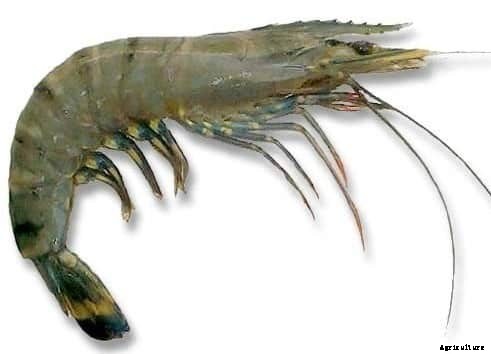
エビ栽培の場所の選択:
養殖と同じ、 エビの栽培場所の選択は、エビの栽培において重要な役割を果たします。そして、栽培の完全な管理慣行は、サイトの施設の可用性に依存します。池からの収入は土地自体の収入よりも多くなければならないことが重要です。
- エビ養殖のために選択された場所は、入江のための池のレイアウトを設計するために徹底的に調査されるべきです、 歩道、 と排水の排出。
- 長方形の池は収穫に最適です、 これは淡水エビ養殖で一般的に使用されています。 M. rosenbergiiの幼生のエビ養殖を成功させるために、 1.最適な温度範囲、 2.必要かつ適切な飼料および3.飼育水槽の水質を維持する必要があります。
- 幼虫の発育に最適な温度は約28°Cである必要があります。 幼虫は26.5から31.5°Cの温度範囲で成長することができます。
エビ栽培サイトの地形:
地形は、エビを栽培するための土地の形を表しています–
- 地形は、サイトが平坦であるかどうかを決定します。 丘陵の高地または低地。地形はあなたが構築する必要がある池の種類を決定するようになります
- 敷地内のエリアをマークすることは、池の建設の最初のステップになります 養魚 。
- エビの池が平らな表面の土地に建てられている場合、 池の底は、排水システムを簡単にするために、出口に面してずさんな構造にする必要があります。エビの池の主壁は、斜面の端に建てられる必要があります。
- 地形だけでなく、 エリアの、 土壌の状態、 水質もエビ養殖の重要な要素です。
- その他の考慮事項は、道路アプローチです。 市場、 消費者の食生活/状況、労働力や氷などの利用可能性。
エビ栽培用土壌:
- 池の建設におけるもう一つの重要な要素は、池の土です。エビの栽培に最適な土壌は、特性を保持できる滑らかで滑りやすいテクスチャーを備えた粘土スリット混合物でなければなりません。
- ローム質で砂質の土壌、 60%の砂と40%のシルトで構成することを強くお勧めします。
- 岩が多いまたは移動する砂質土の場合、 そのサイトでは、 あなたは小さな池だけを建てるべきです。高品質の土壌は、主にその栄養素含有量に対する水の肥沃度に責任があります。
- 出産することは池の栄養素の尺度です、 そしてそれは単にエビ/魚が消費するために池で利用できる食物の量を指します。土壌には鉄のような必要な栄養素が含まれている必要があります、 カルシウム、 とマグネシウム。時にはそれはまた酸のような特定の有害物質を含むかもしれません。土が良いなら 農業 、 それは水産養殖に良いはずです。池の敷設は、多くの場合、砂地や湿地で経済的に最適です。 他の種類の搾取には経済的ではありません。池は土地が与えるよりも良いリターンを与えなければなりません。貧しい農地は非常に良いものに変わることがよくあります 魚のいる池 。一般に、 土が良いです、 そのような養殖池での生産がより良いでしょう。池が質の悪い農地に建てられている場合、 そして池はよく世話をする必要があります、 池の底の土は以前より肥沃になり、 やがて。統合農業の下で、 多くの農民は水田でエビや他の魚を育てることがよくあります。 水田とエビ/魚から稼ぐという二重の利点があります。
エビ栽培のための土壌品質改善のヒント:
- 酸性土壌はエビの生産性に良くありません。高酸性土壌の場合、 それらは石灰で処理されるべきです。
- 池の水のpHレベルが6から6.5の範囲である必要がある場合。日の出時に6.5より高いpHレベルの場合、 池が完全に乾く前に、土壌を石灰で処理する必要があります。これにより、石灰が溶解して土壌に浸透し、pHレベルが維持されます。
- 定期的な石灰処理は、総アルカリ度を高めます。農業用石灰岩は、アルカリ度を上げるために使用するのに最適な化合物です。また、必要な石灰の量は、土壌の種類とそのpHによって異なります。
- 水のpHが高い池は、「熟成」することで非常によく改善できます。これは、貯蔵の2〜4週間前に池を水で満たし、自然の生物学的プロセスでpHを緩衝することによって行われます。しかし、 これはまた、捕食者や雑草が成長する可能性を高める可能性があります。
池の耕作のための池の建設:
- エビの養殖には、 池は、水生種の管理された養殖に推奨される浅い水域でなければなりません。それはそれが容易にそして完全に排水されることができるような方法で構築されます。
- 建設前に、 池の建設場所の選択は最も重要です。
- 建設予定の池の数と種類も事前に決定する必要があります。池のサイズと表面はかなり異なる場合があります。中小規模の池は管理が簡単ですが、 したがって、比例して最も生産的でもあります。
- 0.5〜1.5エーカーの池のサイズは非常に便利で操作が簡単です。池が長方形(0.6ヘクタールの池は幅30m、長さ200m)であれば収穫が容易です。
- 池の長さは、敷地や地形、農場のレイアウトに基づいて決定する必要があります。幅30〜50メートルの池はいつでも簡単に操作できます。
- 池の深さは0.75〜1.20 mの範囲で、平均水深は0.9mである必要があります。
- より深い池は管理が困難です。堤防と池の法面の比率は2:10に維持する必要があります。堤防は常に固くて水密な地面に置かれなければなりません。
- 池の底は、岩や木の切り株が突き出ていないように滑らかでなければなりません。池の底は、取水端から排水端に向かって徐々に滑らかに傾斜している必要があります(面積が0.4 ha以上の池では20%(1:500)、小さい池では5%(1:200)が推奨されます。アウトレットに向かって、 排水収穫が行われる場所。これは、エビがしばしばロックされ、最終的に池の完全な排水中に死ぬ水のポケットを制御するのに役立ちます。
- 狭いエビの池は、卓越風が長軸を排水端に向かって吹くように配置する必要があります。 銀行の侵食を最小限に抑えます。
- また、池には適切な排水システムが必要であり、流入水と流出水が混ざらないように適切に注意する必要があります。
- 大きなエビの池は30mあり、収穫のために定期的に排水されます。淡水エビは、コンクリートや土の貯水池に貯蔵することができます。 池、 灌漑用水路、 ケージ、 と天然水。
- 冬の間、 深い池の底の水温は、エビによる飼料消費を減らすのに十分に下がる可能性があります。そして浅い池では、 エビには水温が高くなりすぎることがあります。
- また、 水はかなり澄んでいます、 エビをより大きな捕食にさらす。さらに、 浅い池は根付いた水生植物の成長をサポートする傾向があるため、お勧めできません。
エビ栽培における受精 :
- 若いエビへの豊富な食糧供給と雑草の成長を防ぐために、 エビの養殖では、池の施肥を定期的に行う必要があります。エビの池の受精の主な動機は、すべての主要な、 エビの最大生産性に向けた二次および三次レベルの生産性。
- 池の自然な生産性は、肥料(無機および有機)の適用によって常に向上させることができます。したがって、 そもそも、 動物プランクトンと植物プランクトンの混合ブルームが発生するまで、池は無機肥料と有機肥料で調整する必要があります。すでに比較的厚い微生物密度を持っている池の施肥は、それらの数をかなり急速にさらに増加させる可能性があります。
- 石灰の層は池の底に配置する必要があります、 池が古いか新しいか。そして、池は牛糞で肥やされるべきです、 これは最高の有機肥料です。
- 養魚池の有機肥料は、次の基準に基づいて分類されます。炭水化物をほとんどまたはまったく含まない有機肥料 NS。 炭水化物のみを含む有機肥料(例:マスタードオイルケーキ、 緑肥コンポーネント )。 NS。 炭水化物と窒素物質を含む肥料(例:家禽の廃棄物-物質、 下水、 汚泥、 農場の廃棄物など)。
- 必要な有機肥料の種類は、栽培が提案されている魚の種類によって異なります。 24kg /エーカー/週で追加された有機肥料は豊富な動物プランクトンの個体数を生み出します。綿実粕は、簡単に入手できる有機材料の優れた供給源の1つです。綿実粕は、大豆粕のような他の有機物質よりも繊維含有量が高く、 魚粉と肥料。マフアオイルケーキ、 適用の初期段階では魚を殺すための毒として機能しますが、 また、優れた肥料として機能し、プランクトンの生産を誘導します。水中で植物プランクトンのアオコが発生するまで、窒素とリンを含む無機肥料を加えることができます。適切に施肥された池では、 水柱の視程は18インチ未満である必要があります。
エビ栽培のための給水:
水域を満たすための良質の水が利用できるかどうかは、池の建設場所を選択する上でおそらく最も重要な要素です。水の供給は、エビ栽培の期間中常に継続する必要があります。
池の水はいくつかの水源から得ることができます:
- 降雨:スカイポンドと呼ばれるいくつかの池は、雨だけで満たすことができます。
- 流出:いくつかの池は、周囲の陸地からの水がそれらに流入すると満たされる砂利と砂場です。
- 天然水:多くの池は天然温泉から水を供給していますが、 井戸、 湖、 川など
読む:マグロの養殖。
エビ栽培のための水質:
- 池は、悪臭や味の悪い良質の水を得る必要があります。濁りがないことは明らかです。水が濁っている場合は、 水が池で使用される前に、それは落ち着くのを許されるべきです。水が明るい緑色の場合、 たくさんの食べ物が含まれています。水が暗い場合は、 茶色がかった、 酸が含まれている可能性があるため、水を中和するために石灰を加える必要があります。水源と池に到達する前に水が移動した距離についての知識が必要です。
- 農場は、すべての池を同時に満たすことができる適切な配水システムで設計する必要があります。総硬度は50〜100 mg / L(CaCO3)で、淡水エビの飼育に最適です。非常に柔らかい水の硬度は、硫酸カルシウム(石膏)を加えることによって高めることができます。 2 mg / Lの石膏は、総硬度を1 mg / L増加させます。
- 硬水については、 通常、治療は必要ありません。同じ池または隣接する池の水を流したり排水したりせずに、入ってくる水が汚染されないように注意する必要があります。したがって、給水口は常に排水ポイントの反対側に配置する必要があります。
- 各池には、中央の配水路からの独自の独立した給水が必要であり、別の池からの流出を受け取らないようにする必要があります。
- 貯水池または隣接する池からの水がエビの池に導入されると、植物プランクトンと動物プランクトンのブルームが急速に発達するため、ある池からの水を別の池に移すべきではありません。
- 水はパイプまたは開いたチャネルを介して分配され、重力によって池に落ちる必要があります(溶存酸素含有量を改善するため)。これは、流入する水が水面に落ちるように、池の水位より上に入口供給パイプまたはチャネルを配置することによって達成できます。
エビ養殖における池の充填:
- 15日間石灰を塗った後、 池はゆっくりと良質の水で満たされています。水が酸素化されるように、高さにある入口から池に水を落とすのが良いでしょう。水が非常に速く入ることができる場合、 底がかき混ぜられて泥だらけになることがあります。したがって、 水は数日間落ち着くのを待つ必要があります。少年/ PLが池に導入される前は、 水質をテストする必要があります。
- 淡水エビの池で使用される水は、石灰や化学薬品で処理されていません。バルブ、 堰、 ストップログまたはプラグは、各池への水の流れを制御するために使用されます。入ってくる水は、魚の卵の侵入を制限する可能性のある小さなスクリーンを通過できるようにする必要があります。 小魚や昆虫、その他の捕食者。 300〜100ミクロンのメッシュで生地をろ過すると、不要な捕食者をすべて取り除くことができます。
- 池は、水を満たしてから7日以内にPLをストックする必要があります。 昆虫の個体数はこの期間中に最も少なくなるからです。管井戸やポンプシステムからの水も使用できます。
- 井戸水は通常低酸素であるため、カスケードするか、高さから池の水位に落とすことによって行うことができる曝気が必要です。
- エビ養殖の水質を維持するために、 高レベルを維持するのに役立つ定期的な交換水が必要です。重力流入チャネルに波紋を組み込むことで、流入する水の溶存酸素レベルを高めることもできます。
- 酸素欠乏時に曝気装置が必要になる場合がありますが、 これは熱帯の池の非常に一般的な現象です。生産性を高めるために水質を維持するには、人工曝気が必要です。 特に部分的な収穫の後。日中の溶存酸素レベルを維持するためにも、曝気が必要です。 特にそれが低くなる池の底で。
エビ栽培における排水システム:
- 各池には、他の隣接する池から独立した水入口と出口が必要です。必要に応じて、毎週または2週間ごとに水を補充する必要があります。
- 池を空にしてその後乾燥させることができるように、池には非常に効果的な排水システムが必要です。空にすることは、一連の排水溝または溝によって達成することができます。 僧侶で終わるかもしれません。これらの構造物は排水を助け、池の奥に位置しています。
- 僧侶は完全な排水を助けるだけでなく、セーヌの収穫中の水位を制御するのにも役立ちます。 フラッシング、 と水の循環。僧侶は水門のようなものです、 そしてそれは池の壁に組み込まれていません。でも時々、 僧侶の背中が壁に触れています。
- 池は重力によって排水されるべきです、 できれば「僧侶」または水門を通ってください。魚が逃げるのを防ぐために、出て行く水もふるいにかける必要があります。重力による排水が不可能な場合、 ポンピングを使用することができます。
エビ栽培の温度範囲:
- エビの温度耐性は広範囲(15〜35℃)です。しかし、 28℃はおそらく幼虫の発育に最も望ましい温度です。 彼らは26.5から31.5ºCの温度範囲でうまく繁栄することができますが。
- 急激な温度変化、 だけでなく、pH、 エビが放流されると死亡する可能性があります。池に放流する前に、 PLを含むバッグは、バッグの温度を徐々に池の水位まで上げるために、池の水に浮かせる必要があります。 Any adjustments to the pH of the transport water should be made in the hatchery itself prior to their transport.
Preparation of the Prawn Pond:
- After harvesting the last batch of prawns, or newly constructed pond, the pond should be drained to get rid of all the predators. Pond sediments should be removed.
- The pond should be dried completely for 2-3 weeks after every harvesting or at least once a year.
- And the bottom of the pond should be ploughed, which increases the oxygen content of the soil.
- And the soil should be treated with 1000 kg/ha of agricultural limestone (CaCO3) or 1, 500 kg/ha of hydrated (slaked) lime in case of severe infection during the previous crop. After adding limestone, the pond should be sun-dried for 15 days.
- Necessary repairs to the pond banks and the major structures, including inlets and outlets should also be made.
Broodstock in Prawn Cultivation:
The sexes in prawn are separate. Fertilization is external; the male deposits the sperms near the genital openings of the female and the eggs get fertilized as soon as they leave the female’s body. Subsequently, the fertilized eggs get fastened to the pleopods by a sticky secretion of the tegmental gland. In this way, the female carries hundreds of the eggs attached to hairs on her pleopods until the eggs hatch. Such females are said to be ‘in berry’ or ‘berried’ females and carry up to 4000 eggs for about 4 months. The females bend down her abdomen first to protect the eggs and later the young’s cling to the swimmerets of the mother for a short period.
Management of the Broodstock:
- Practices of outdoor management of broodstock in the tropics are identical to those of rearing facilities.
- Immediately after receiving the broodstock at the hatchery, they should be disinfected with 0.2 to 0.5 ppm of copper sulphate or 15 to 20 ppm of formalin for 30 minutes with proper aeration. Subsequently, they should be transferred to ponds having an optimum water temperature ranging between 27-31°C.
- A nutritionally complete diet is essential to promote superior egg production and quality. Commercially pelleted feeds can be used, but need supplementation. Broodstock should be fed at a daily rate of 1-3% of the total biomass:50% of the pelleted feed should be replaced with the equivalent amount of liver or squid or mussel flesh, at least twice a week.
Collection of seed/juvenile in Prawn Cultivation:
- Freshwater prawns are collected from rivers, or from nurseries, for stocking into open waters. Breeding is done in low saline waters, for larve and PL development after incubation. Breeding of M. rosenbergii takes place in estuaries.
- The collection of seed from the natural resources has many practical advantages that include:(i) the cost of seed procurement is cheaper without the use of any advanced technology, (ii) the method of collection is very simple, (iii) because of their mass movement, pure prawn seed can easily be collected. Juveniles are collected in large numbers during rainy and post-rainy (up to November) seasons. Prawn juveniles are either collected from scoop net or with the help of traps. A trap made of a bunch of various bushes tied with monofilament or coir ropes is fixed at a water depth 5-6 feet during high tide and 3-4 feet during low tide in the river for 3 to 10 days.
- The bush trap where the juveniles have taken shelter is lifted and shaken to collect them on a stretched piece of cloth of 5’ x 3’ size. They are then transported in open plastic tubs of 5 x 4 feet or 6 x 3 feet to a market or to the fish farmer’s tanks. Though the prawn seed is generally collected from the natural resources, they are only available to a limited extent.
- Many of the prawn species require a certain degree of salinity and the long gestation period for the development of their larvae. The growth rate and survival of each population of prawns depend on several factors like density, predation, feed, and temperature. These factors are site- and operation specific. Survival rates during the grow-out period should be maintained above 50%.
Management of stock for rearing in Prawn Cultivation:
- Individual prawns within a population grow at different rates, some growing very faster than the rest, while some do not grow at all.
- The growth rate is among males is more than females. The size of the prawn to be harvested for selling decides the stocking rate that depends upon several factors. Some of these factors include demand of the local, national, or international markets, a period of the growing season, and on the management, practices being employed. The old ponds are more productive than newly constructed ones.
- The lower stocking rates will produce prawns, larger and average sizes. Whereas higher stocking rates will produce prawns of small size and will increase productivity (metric ton/ha/crop). If stocking of juveniles is made, there are some advantages in grading them before stocking. During culture operation, the ponds need proper maintenance including the safeguarding of the water inlet and outlet fittings along with their filters (screens, socks).
- Plantation of vegetation along the pond bank minimizes erosion of the pond bank. The pond depth should be maintained at an average of 0.9 m. The presence of aquatic plants below the waterline, しかし、 provides food and a habitat for the prawns.
- The plants Elodea sp. And Hydrilla makes a good substrate for prawns.
- しかし、 the excessive growth of vegetation prevents light penetration. The ponds should be stocked with the juveniles within 7 days after the pond is filled when the predaceous insects are at low densities.
- In case the size of the PL obtained from the hatcheries are very small, they should first be reared in nurseries for 4 to 5 weeks till they attain a length of 40 to 50 mm with a weight of 1 to 3 g. Depending upon the type of management practices, 4000 to 5000 PL per hectare are released into the ponds.
- The cultural practice may be monoculture or polyculture with major carp. In a polyculture system, the depth of the pond should be increased to 4 or 5 feet. While the number of PL of prawn in polyculture should be from 2500 to 20000, the number of carp fingerlings should range from 2500 to 5000. In monoculture practice, the culture period is about 6 to 8 months, and in polyculture practice, the culture period is about 8 to 12 months.
- Depending upon the type of management practice, the survival rate varies from 50% to 70%. Other important management practices include regular feeding, aeration and water renewal etc.
Prawn Cultivation Management Systems:
There are two types prawn cultivations, Monoculture and Polyculture:
Monoculture Prawn Cultivation:
Monoculture prawn cultivation can be extensive, semi-intensive or intensive, but the definition of these terms is rather vague.
In extensive culture, rearing of prawn is done in ponds, in this system that production rate is less than 500 kg/ha/yr. In extensive culture, the prawns are stocked from wild sources, with PL or juveniles. Neither the water quality is controlled, nor the growth and mortality of the prawns are generally monitored. In this farming system, prawns are provided with supplemental feed. The ponds should be fertilized with organic manures.
In semi-intensive systems, the prawns are fertilized with a balanced diet. Water quality, prawn health and growth rate are constantly monitored. Semi-intensive prawn culture is the best farming system in tropical, with productivity of more than 500 kg/ha/yr.
In intensive culture freshwater prawn farming is done in small earthen or concrete ponds (up to 0.2 ha), with the high water exchange and continuous aeration, stocked, at more than 20/m2 and the output will be more than 5000 kg/ha/yr. The costs of construction and maintenance of these types of ponds are high and require high degrees of management practice, including the use of a nutritionally complete feed, the eradication of predators and competitors, and controlled water quality.
Polyculture Farming System:
A polyculture farming system is composite farming, farming prawns along with single or multiple species of fishes. The benefits of polyculture system are:
- High oxygen levels;
- More protection from predators.
- Coprophagy, prawns consume the larvae of fishes, which increases the efficiency of feed;
- High productivity.
- The potentiality of the ponds will increase by the inclusion of a high-value species.
- Prawn-fish polyculture systems are batch-harvested. The addition of prawns to a fish polyculture system won’t reduce the quality of fish production.
Integrated Farming System:
- The water from farming ponds is used for the irrigation of agricultural lands.
- Prawns are often reared in paddy fields, without any decrease of the paddy production. The introduction of freshwater prawns reduces the cost of fertilization and weeding (prawns eat weeds).
- The pH levels in agricultural lands vary from 6 to 9.8, which is suitable for prawn to farming.
- The temperature in such a culture system (26 ºC to 32 ºC) is also suitable for the prawns.しかし、 the paddy fields should be prepared properly with fencing the dikes, screening the inlet and outlet pipes and digging a trench around the paddy culture area.
Feeding Management in Prawn Cultivation:
- In semi-intensive prawn farming system, supplementary feeding is a must. Some of the farmers rely on fertilization than on supplementary feeding. A supplementary feed will improve performance and is cost-effective.
- At initial stages feed the prawns with an organic fertilizer that enhances the availability of natural feeds in ponds.
- Applying feed in rearing period will increase the growth the natural food in prawn ponds and also decreases the transparency of the water, therefore reducing the growth of weeds.
- The PL can be fed with different types of feeds, 例えばegg custard and Artemia, fish flesh and Artemia nauplii, tubifex worms, and nauplii etc.
- The types of feed used in prawn cultivation are of many types and the feed includes animal or vegetable raw materials and feed mixtures prepared yourself are called ‘farm-made feeds’.
- The ready-made commercial feeds are also available in the market. Being omnivorous, their nutritional requirements are not very demanding hence can be fed on a variety of feeds ranging from wet feeds made from rice bran, oil cake, flesh of fish and other animals (e.g. squids, mussels’ shrimps) and Artemia, tubifex worm, nauplii, egg custard to scientifically formulated pellet feeds.
- A complete diet must be provided for proper growth of the prawn. It takes both natural as well as formulated feed. Feeds and feeding progressively change from a fertilization schedule to feeding a slow sink pellet.
- Common agricultural by-products such as cottonseed meals and distillers grains may be used to feed the prawns during the initial two months of rearing.
- しかし、 during the last one to two months of growth, pelleted feed preferably water stable must be provided.
- Water-stable feeds provide the prawns with a balanced diet. Well-bound compounded feeds also result in less water pollution and make analyses of the daily feed requirements easier.
- The feed should be scattered evenly on the pond basin. Feeding should be done @ 4% of body weight/per day.
- In polyculture culture systems, simple mixtures of rice bran with plant oilcakes like mustard and groundnut are used as feed.
Problems in Prawn Cultivation:
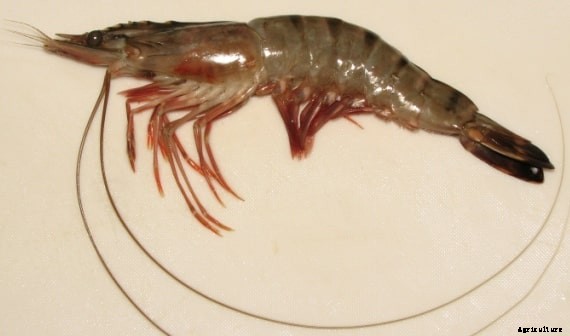
- Sudden heavy or low mortalities in small numbers over a period may indicate reassessment of the culture applications. Prawns covered with algae or absence of recent mounting may indicate their unhealthy conditions and/or poor culture conditions.
- The reasons may be poor farm management, leading to derelict water quality and/or attack of the disease. Other external factors like pollution from pesticides and herbicides may be some of the other factors.
- The most likely source of external water pollution is from pesticides and herbicides. Frequent exchange of a small proportion of the water is the usual way of maintaining water quality. Cannibalism is common in prawns.
- A scum of phytoplankton often covers the surface of the pond causing low DO problems after sunset. Low DO should be suspected if prawns begin to crawl out of the ponds or congregate at the edges of the pond in daylight. This can be controlled by reduction in feed and by exchanging water. If this problem persists flushing the pond is recommended. Dense phytoplankton bloom often causes high pH.
Predation in Prawn Cultivation:
- The most important way to prevent the appearance of predatory animals is to stock prawns immediately after filling the ponds so that predators and competitors do not get established.
- The M. rosenbergii themselves, can also control the dragonfly population, if stocked before the hatching of the insects, the presence of good population frogs and toads in the pond is indicatives of the absence of predatory fish.
- Predation is caused mainly by other aquatic species (belonging to the same or different groups) like insects, amphibians, birds, snakes, and mammals. Mosquito fish (Gambusia affinis) and related species are often stocked in freshwater prawn ponds to control insects.
- Perimeter fencing, lighting, employment of dogs and reliable watchman may help to minimize predation by human beings. Loss of prawns through operational faults and poor management is also very common.
- If the outlet structures are not properly maintained, the prawns very often escape from them. Using rotenone or teased cake between cycles can effectively control unwanted fish. Passing the intake water through suitable screens or gravel filters can prevent the entry of fish and some insects.
Diseases in Prawn Cultivation:
- Disease problem in pond cultivation is relatively low when compared with other aquaculture farming.
- This may perhaps be due to relatively low stocking densities of the prawn practiced so far. With the increased stocking rates, problems may also increase.
- Diseases occur when the prawn ponds when the quality of the water deteriorates. Disease problems are caused due to the transfer of animals from one place to another, and also the introduction of animals into a location where they are not indigenous.
- And some other reasons that can cause diseases are due to nutritional deficiencies, fouling or parasites.
- There are some diseases, which are non-specific or are of unknown origin. Their treatment is also not normally practicable. The prawns also face the diseases called muscle necrosis, the prawns are affected with these diseases have a whitish color in the striated muscles of their tails and appendages.
- The necrotic areas may increase in size and become reddish, a color identical to cook specimens due to the decomposition of the muscular tissues. Secondary infections (e.g. Bacteria and the fungus Fusarium) also get associated with the affected areas.
- Prawns suffering from chronic muscle necrosis do not generally survive and heavy mortality rates varying from insignificant to 100% may occur. This disease may occur due to poor management practices, particularly when stocking rates and handling stress are high resulting in poor environmental conditions (e.g. Low dissolved oxygen, temperature fluctuations, and salinity fluctuations).
- Extreme infestation on the gills impairs their physiology leading to their mortalities in juvenile or adult stages. Heavy infestation over the exterior surface can also reduce its market value. Infestation by filamentous algae has been observed to occur in rearing ponds with high water transparency (above 40 cm).
- This problem can be overcome by lowering water transparency through feed management. The effects of fouling organisms can be controlled by good management practices, especially by proper treatment of the incoming waters, proper cleaning of the tank basins, and the treatment of Artemia cysts. Avoidance of over-feeding and increased water exchange may also help to minimize the incidence of fouling. Chemical treatments against fouling organisms are not generally recommended.
Harvesting in Prawn Cultivation:
- Farmed prawns are better than wild-caught. Good quality prawns have a greenish or bluish tint with bright blue or orange chelipeds. Harvesting of prawn can be identical to seining provided the pond is free from obstruction.
- Once the prawns are collected after harvesting, the larger specimens are picked by hand picking. Small size prawns are returned to the water and should be grown further. Trimming the large blue claw prawns helps the other prawns to grow to a larger size.
Methods of Prawn Harvesting:
- Harvesting can be made either by culling (sometimes called cull-harvesting) or draining (drain-harvesting). The time to harvest depends on the growth rate, size of specimen being caught and the pond management technique applied. Cull harvesting helps to harvest market-sized prawns from the pond. Remaining prawns are harvested at the end of the farming period. Cull harvesting should be initiated from 5-7 months.
- The ponds are drained after 8 to 11 months, and the entire catch is sold. After drain harvesting, the pond can again be prepared, refilled and restocked immediately, or be kept empty until enough water is available again for rearing.
- Cull harvesting is not the best method of harvesting to collect market sized prawns.
- The best way would be to harvest is, to empty the pond totally and remove all the dominant animals and restock the others in the same and/or different ponds.
- All harvesting operations should be practiced in the early morning hours when the atmosphere is cooler and low water levels do not harm the pond inhabitants due to direct exposure to the sun. The pond water level can be lowered during the night before harvesting.



